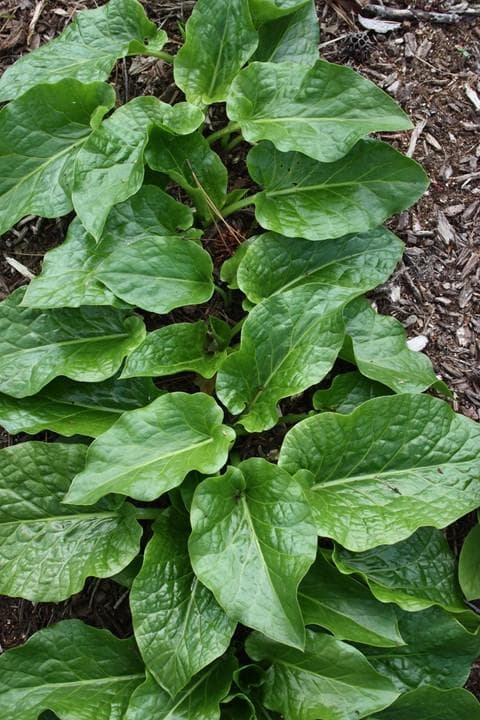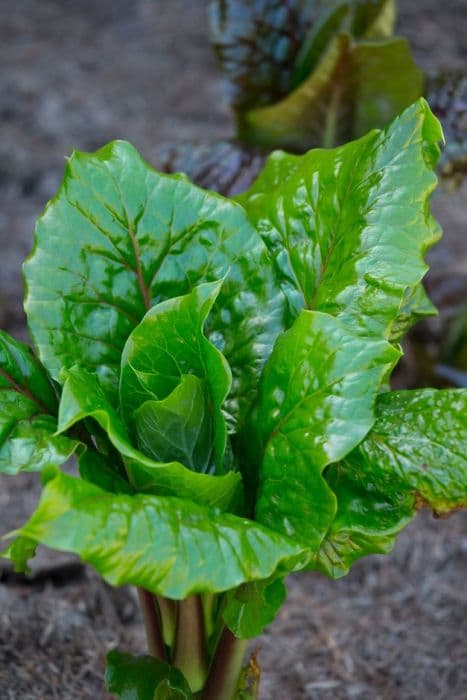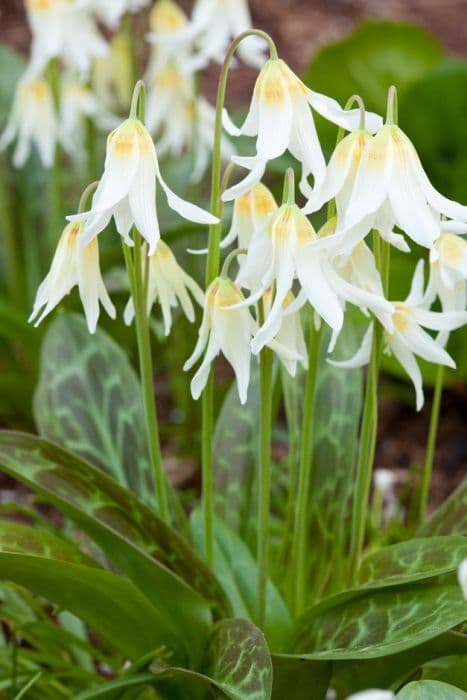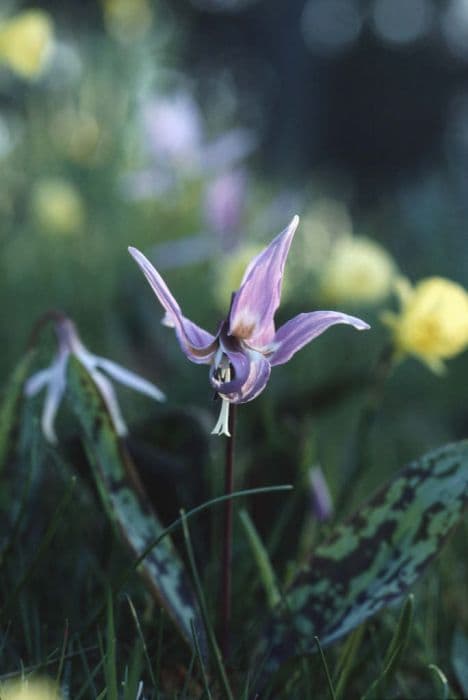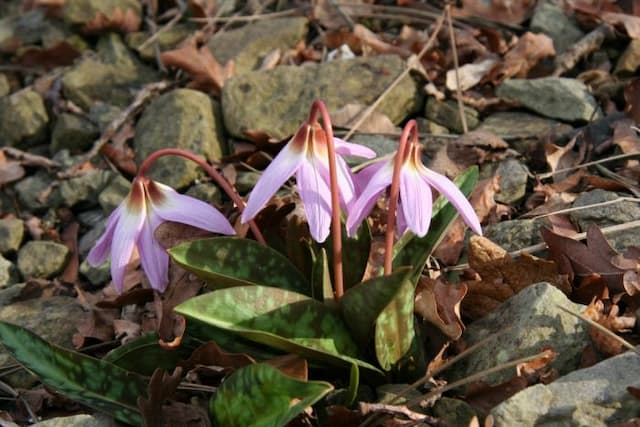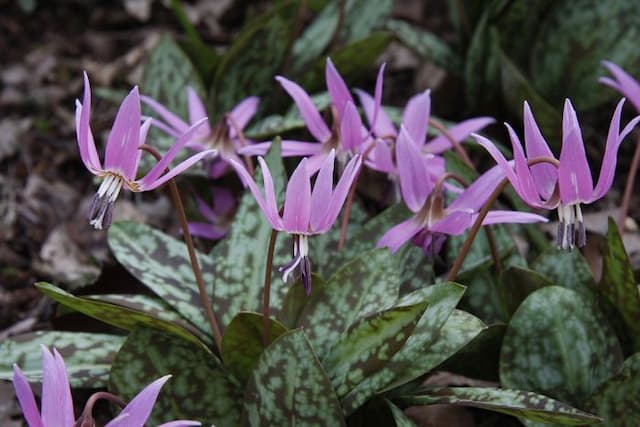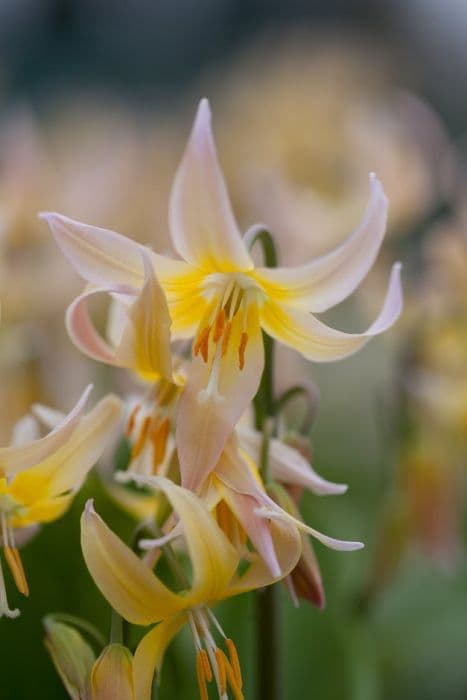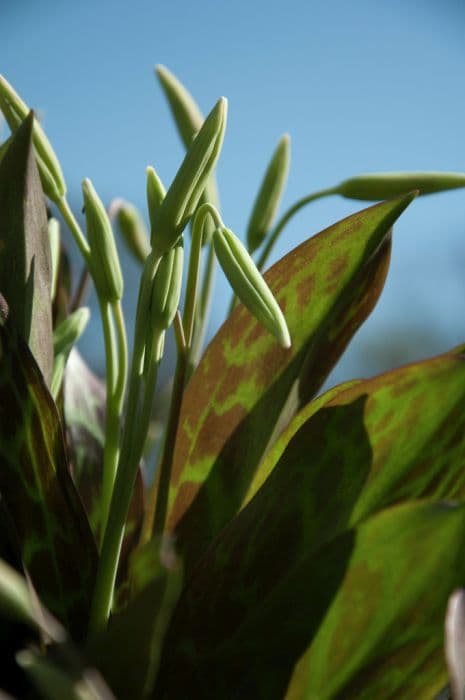Crown imperial Fritillaria imperialis

ABOUT
F. imperialis is a robust perennial with stout, erect stems bearing whorled, lance-shaped leaves and, in early summer, a terminal umbel of bell-shaped orange or yellow flowers beneath a crown of bracts
About this plant
 Names
NamesFamily
Liliaceae
Synonyms
Crown Imperial, Imperial Fritillary, Kaiser's Crown
Common names
Petilium imperiale, Lilium imperiale, Fritillaria corona-imperialis, Crown Imperial.
 Characteristics
CharacteristicsLife cycle
Perennials
Foliage type
Deciduous
Color of leaves
Green
Flower color
Varies
Height
3 feet [91 cm]
Spread
1 foot [30 cm]
Plant type
Bulb
Hardiness zones
5
Native area
Asia
Benefits
 General Benefits
General Benefits- Aesthetic appeal: Fritillaria imperialis, commonly known as the crown imperial, boasts striking bell-shaped flowers and an impressive height that adds visual interest and focal points in garden designs and landscapes.
- Pest deterrent: The crown imperial is known for its unique musky odor, which is helpful in repelling rodents, deer, and other animals from the garden.
- Easy to grow: This plant is relatively easy to cultivate in a range of soil types, provided they are well-draining, making it a good choice for gardeners of varying experience levels.
- Low maintenance: Once established, crown imperials require minimal care beyond occasional watering, making them suitable for low-maintenance gardens and busy gardeners.
- Seasonal interest: The unique and dramatic appearance of the crown imperial provides seasonal interest in spring gardens when many other plants are not yet in full bloom.
- Pollinator attraction: The flowers of the crown imperial can attract pollinators such as bees, providing an early source of nectar in the spring.
- Historical significance: With a long history in cultivation, the crown imperial carries with it a sense of tradition and historical charm that can be appealing to garden enthusiasts and those with historic properties.
- Companion planting: The crown imperial can be successfully partnered with other spring-blooming bulbs such as daffodils and tulips for a layered and extended display of spring color.
 Medical Properties
Medical Properties- Expectorant: Used traditionally to treat coughs and bronchial ailments by helping to expel phlegm.
- Anti-inflammatory: May contain substances that help to reduce inflammation in the body.
- Analgesic: Has been used in traditional medicine to relieve pain.
- Cardiovascular effects: Some compounds in the plant may have an impact on the cardiovascular system.
- Diuretic: Can increase urine production, aiding in the removal of excess fluids from the body.
 Air-purifying Qualities
Air-purifying QualitiesThis plant is not specifically known for air purifying qualities.
 Other Uses
Other Uses- Fritillaria imperialis bulbs can be used as a rodent repellent, as their pungent odor is believed to deter moles and other rodents from gardens.
- The tall and striking profile of Fritillaria imperialis makes it a valuable plant for educational purposes, illustrating plant biology and pollination strategies to students.
- In historical gardens, Fritillaria imperialis was often planted for symbolic purposes, representing power and majesty due to its crown-like appearance.
- The plant is used in landscape design to create vertical accents in flower beds, due to its towering height and distinctive flowers.
- Fritillaria imperialis can serve as a companion plant in gardens, helping to protect other plants from rodent damage without the use of chemical repellents.
- As a traditional indicator of spring, Fritillaria imperialis is often used in seasonal festivals and floral arrangements to celebrate the changing of the seasons.
- The seed pods of Fritillaria imperialis, which resemble bells, are used in crafts and as natural ornaments in dried flower arrangements.
- The stately appearance of Fritillaria imperialis makes it a popular choice for ceremonial spaces and commemorative gardens as a symbol of nobility and pride.
- In photography and art, the unique geometry and coloration of Fritillaria imperialis blooms are often captured as subjects to showcase the diversity of nature's designs.
- Due to its height, the plant is sometimes used as a natural trellis for supporting climbing plants that require a structure to grow upon.
Interesting Facts
 Feng Shui
Feng ShuiThe Crown Imperial is not used in Feng Shui practice.
 Zodiac Sign Compitability
Zodiac Sign CompitabilityThe Crown Imperial is not used in astrology practice.
 Plant Symbolism
Plant Symbolism- Majesty and Power: The Fritillaria imperialis, commonly known as Crown Imperial, has a regal appearance and is said to symbolize power and majesty due to its towering height and crown-like flowers.
- Authority and Command: Its commanding presence in a garden can signify leadership and dominance, reflecting an air of authority.
- Resilience and Fortitude: As a hardy plant that returns each spring, it is often associated with resilience and the ability to overcome challenges.
 Water
WaterCrown Imperial requires moderate watering, particularly during the spring and summer growing season. Water when the top inch of soil feels dry, which typically equates to about one inch of water per week. It's crucial not to overwater as this plant is susceptible to root rot. During the dormant period in late summer to fall, reduce watering substantially and allow the soil to dry out completely between waterings. Avoid getting water on the foliage or flowers as this can promote disease.
 Light
LightCrown Imperials thrive best in full sunlight to partial shade. They should be planted in a location where they will receive at least six hours of direct sunlight each day for optimal growth. However, in extremely hot climates, some afternoon shade can help protect the plants from intense, potentially damaging heat.
 Temperature
TemperatureCrown Imperials do well in a range of temperatures, but they prefer cooler conditions. The ideal temperature range for these plants is between 50 to 70 degrees Fahrenheit. They can withstand temperatures as low as 40 degrees Fahrenheit without damage and are cold-hardy in most temperate regions. It’s important to avoid exposing them to temperatures above 80 degrees Fahrenheit for prolonged periods as this can stress the plant.
 Pruning
PruningPruning Crown Imperials usually involves deadheading spent flowers after blooming to promote plant health and prevent self-seeding. Cut back the flower stems to the base once the blossoms have faded. In the fall, once the foliage has died back naturally, it should be removed to keep the garden tidy and reduce the likelihood of disease. Pruning is not needed frequently throughout the growing season unless damaged or diseased foliage is present.
 Cleaning
CleaningAs needed
 Soil
SoilCrown Imperial (Fritillaria imperialis) requires well-draining soil with plenty of organic matter. A good soil mix would consist of two parts loam, one part leaf mold or well-rotted compost, and a handful of grit or perlite to ensure drainage. The soil pH should be slightly acidic to neutral, ranging from 6.0 to 7.0.
 Repotting
RepottingCrown Imperial bulbs do not need to be repotted annually. Repotting should be done every three to four years or when the bulbs outgrow their current space. This will help ensure continued health and prevent overcrowding, which can lead to diminished blooming.
 Humidity & Misting
Humidity & MistingCrown Imperial plants prefer average to low humidity levels. As they are native to dry mountainous regions, they do not require high humidity environments and can thrive in the humidity levels typically found in outdoor garden settings.
 Suitable locations
Suitable locationsIndoor
Ensure bright light, cool temps, and low humidity for Crown Imperial.
Outdoor
Plant in well-drained soil, full sun, and protect from wind.
Hardiness zone
5-9 USDA
 Life cycle
Life cycleThe Crown Imperial (Fritillaria imperialis) begins its life cycle when the bulb is planted in fertile, well-drained soil during the fall, several weeks before the ground freezes. The bulb lies dormant through the winter, with the cooling period prompting the development of roots. In spring, it breaks dormancy and quickly sends up a tall stem, followed by a whorl of lance-shaped leaves and a crown of bell-shaped flowers arranged in a ring atop the stem. After flowering in spring, the plant sets seed in a fruit that matures by late spring to early summer, then the foliage yellows, and the plant enters a period of dormancy through the hot summer months. New offsets may form around the parent bulb, which can be separated and planted to propagate the plant. The cycle repeats each year, with bulbs requiring a chilling period to ensure a robust bloom the following season.
 Propogation
PropogationPropogation time
Spring
The Crown Imperial, known botanically as Fritillaria imperialis, is typically propagated by bulb division. The ideal time for propagation is in the fall, after the foliage has died back but before the ground freezes. To propagate by bulb division, carefully dig up the mature plant and gently separate the smaller bulb offsets, which are called bulbils, from the base of the mother bulb. These bulbils can then be planted immediately at a depth of about 6 to 8 inches (15 to 20 centimeters) in well-drained soil with good sunlight exposure. Ensuring proper spacing, about 12 inches (30 centimeters) apart, will promote healthy growth. The freshly planted offsets generally take a few years to flower, so patience is required as they establish themselves and mature into blooming size. It's important to handle the bulbs carefully to prevent damage, as bruised or broken bulbs may rot.
